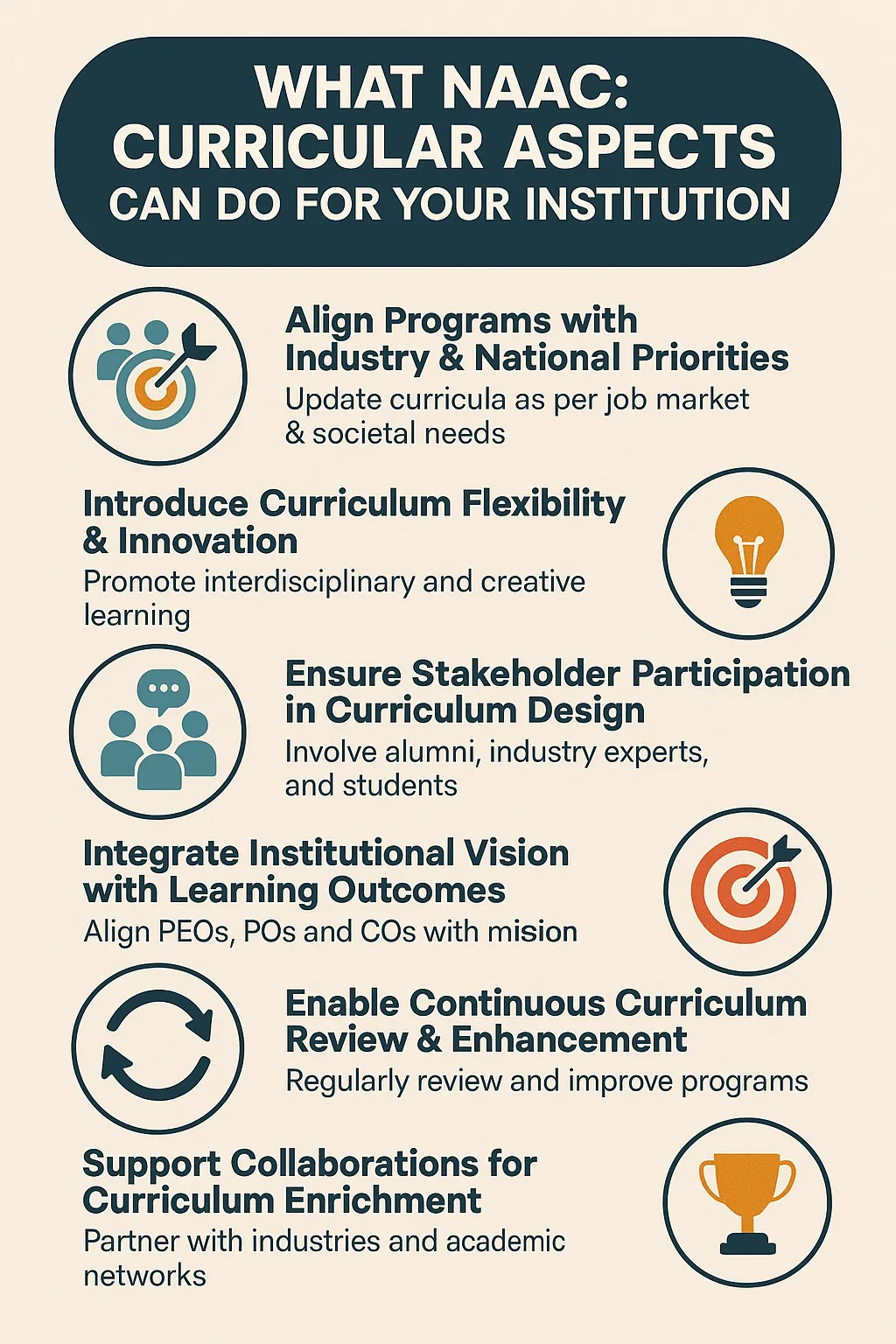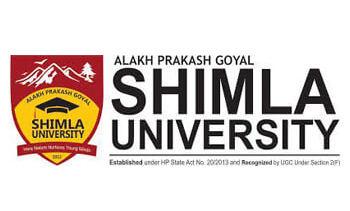Why NAAC Criteria-I Isn’t Just a Requirement — It’s a Growth Strategy
“Illustration of higher education curriculum transformation: university staff collaborating with industry experts, students engaging with flexible course options, and visual icons of CBCS, CO-PO mapping, and NAAC accreditation criteria.”
Let’s be honest.
NAAC Accreditation’s Criteria 1 — Curricular Aspects — can feel overwhelming at first glance. (Read NAAC Manual)
Often dismissed as paperwork or academic formality, this criterion is, in fact, the backbone of institutional quality, academic flexibility, and future readiness for enhanced student outcomes.
In a rapidly evolving world, where students’ aspirations and industry demands shift faster than ever, curriculum stagnation is a silent killer of educational relevance.
What Is NAAC Criteria 1?

- Curriculum revision aligned with industry trends
- Stakeholder participation by feedback (students, faculty, alumni, employers)
- CBCS (Choice-Based Credit System) and academic flexibility (UGC link)
- Introduction of value-added and certificate courses
- Integration of emerging issues like gender equity, sustainability, and ethics
- Proper CO-PO mapping (Course and Program Outcomes)
This isn’t just a bureaucratic process. It’s a reflection of how future-ready and student-centric an institution truly is.
Why Institutions Struggle with Criteria 1
- Faculty need training in modern pedagogy and tech
- Curriculum revisions require council meetings and expert input
- CO-PO mapping requires data tools and skills
- CBCS implementation needs infrastructure and planning
- Value-added courses need industry tie-ups or expert hiring
Yes, it feels overwhelming — but ignoring it has long-term costs.
Curriculum is Like a Restaurant Menu
Would you run a restaurant offering the same dishes year after year, ignoring your customers' changing preferences? Probably not.
So ask yourself:
“If every student is taught the same content year after year, without considering their goals or industry trends — are we really educating, or just surviving?”
The Real ROI of NAAC Criteria 1
- Student-Centric Education: Future-ready graduates with job-relevant skills
- Stronger NAAC Scores: Innovation and outcome-alignment reflect in grades
- Improved Placements: Courses aligned to demand increase employability
- Institutional Branding: Adaptive programs attract better talent
How to Start: Practical Steps for Curriculum Reform
- Create a curriculum revision calendar (every 3 years)
- Form a Curriculum Development Committee with industry/alumni
- Implement CBCS with flexible electives
- Introduce 2+ value-added or certificate courses per semester
- Collect feedback digitally from stakeholders
- Train faculty in CO-PO mapping; use AI-based tools for tracking
- Continuously monitor and revise curriculum based on attainment
It’s Not a Checklist — It’s a Feedback Loop
Are you reviewing feedback regularly?
Are new courses added based on employer/student input?
Is your curriculum mapped to NEP 2020 or SDGs?
If yes, then you’re not just complying — you’re growing.
Academic Flexibility Builds Institutional Agility
NEP 2020 emphasizes flexibility, multidisciplinary learning, and employability — all of which align with Criteria 1’s vision.
- Encourages personalized learning
- Improves credit transfers
- Aligns with global higher education trends
Final Word: Stop Treating NAAC Criteria 1 as Burden
Let’s stop viewing Criteria 1 as a headache and start seeing it as the foundation of long-term academic growth and recognition.
If we want better students, placements, and outcomes — it begins here.
Need help? Reach out to explore AI-powered tools and support to go beyond compliance.





